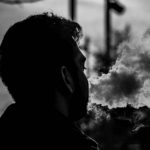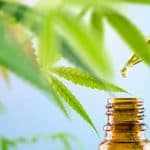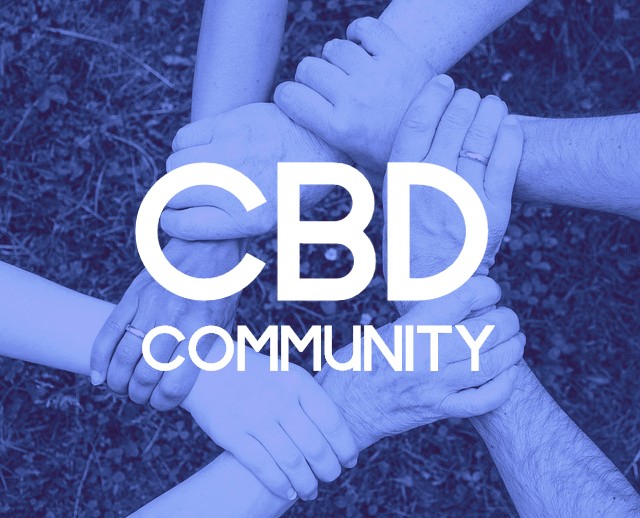Last updated on 13 July 2021
Introduction
Narcolepsy is a disabling sleep disorder that is marked by excessive daytime sleepiness. It is a chronic autoimmune disorder of the central nervous system that could affect men and women. The prevalence of this disorder is around 1 in 2000. Research considers narcolepsy as underdiagnosed or misdiagnosed among affected individuals.
The low prevalence of the disorder makes it an ‘orphan’ or rare disease. And rare diseases have limited clinical expertise and expert centers. Hence treatment becomes complicated. Despite the availability of published medical endorsements, approved and unapproved therapies, some studies term narcolepsy as challenging and incurable.
Even though narcolepsy is a rare disease, affected people suffer from functional disabilities, reduced productivity, poor quality of life, lack of ability to focus on academic studies, depression, and other psychosocial problems. Does this not lead to increased economic burden and higher health care costs?
Since 2009, the onset of narcolepsy in younger children has been identified.
Therefore it is imperative to understand the nature, types, symptoms, and possible medical, non-medical based, and natural remedies for treating narcolepsy. This blog post aims to discuss the above aspects and the role of Cannabis phytocannabinoids on sleep disorders.
Let us seek further knowledge from accessible research and published studies.
Narcolepsy
It is a chronic neurological disorder that occurs when the brain loses its ability to control sleep-wake cycles.
People affected with narcolepsy fall asleep any-time during the day or in the middle of an activity, they are engaged in. Narcolepsy patients cannot be left alone even to carry on their daily activities like walking, driving, eating, talking, watching television, etc. They may need help and support throughout the day.
The consequences of the disease on people who are engaged in public related professions could turn out hazardous.
The center for narcolepsy reports that this overwhelming sleepiness and fatigue is permanent and a life-long illness. And people who are affected are undiagnosed and untreated.
A 2019 study ((University of Copenhagen The Faculty of Health and Medical Sciences. 2019, March 15 New proof that narcolepsy is an autoimmune disease. ScienceDaily. Retrieved January 13, 2021)) reports that researchers have asserted that this sleep disorder is an ‘autoimmune disease’. And this insight is significant to developing better treatment approaches to this chronic condition.
Research also indicates that most cases of narcolepsy are strongly connected with a group of genes known as the human leukocyte antigen (HLA). Since these genes play a role in controlling the functioning of the immune system, affected individuals have variants of these genes known as the T cell receptor gene. But the genetic factors alone are not responsible for the disorder that affects the central nervous system.
What causes narcolepsy?
In conditions of narcolepsy, the autoimmune process attacks the neurons that are responsible for stabilizing sleep-wake cycles and stops them from producing hypocretin or also called orexin. Thus the healthy tissues or cells are destroyed and impair the sleep-wake cycles permanently.
A 2011 study1 asserts that loss of hypothalamic neurons that produce hypocretins leads to narcolepsy. The function of this hypocretin hormone is to streamline sleep, wakefulness homeostasis, emotion regulation, reward processing, and addiction.
In patients with catalepsy, alcohol drinking may aggravate symptoms of fatigue, sleep paralysis, and depression.
What happens during sleep in narcolepsy patients?
A normal person enters into rapid eye movement (REM) only after 60-90 minutes of reaching deep sleep. And then goes to a dreaming state. On the other hand, people with narcolepsy tend to fall asleep in less than 5 minutes and get into rem sleep much quicker.
This happens not only during the night but every time they fall asleep.
People with narcolepsy often show a lack of drive or determination, underperformance, and low decision making due to ambiguity compared to normal people.
Could impaired sleep lead to such adverse consequences?
The symptoms and associated disorders that accompany the condition is further discussed below.
Types of Narcolepsy
Generally, two types have been known. 1. Narcolepsy with catalepsy 2.Narcolepsy without catalepsy.
Reference from 2019 Study2 gives us more clarity from the revised International classification of sleep disorders.
- Narcolepsy Type 1 (NT1)
- Narcolepsy Type 2 ( NT2)
Both types are chronic and disabling coupled with excessive daytime sleepiness( EDS) and involuntarily falling asleep. However, the study cites some associated differentiating symptoms to differentiate.
NT 1
- Permanent destruction of hypocretin
- Catalepsy
Study3 defines it as a state of marked loss of voluntary motion in which limbs remain in whatever position they are placed.
- Sudden muscle weakness or loss of muscle tone produced by strong emotions such as laughing, winning a game, or sometimes anger
- episodes of cataplexy
- Sleep paralysis
- Hallucinations
- Disturbed sleep
- Begins in childhood or adolescence that needs lifelong treatment
- Rapid eye movement ( REM) and Non-REM sleep parasomnias
- elevated blood pressure at night
Other associated conditions include weight gain and obesity, type 2 diabetes, sleep apnea, cardiovascular diseases, mood swings, anxiety, depression, eating disorder, attention deficit, restless leg syndrome.
NT 2
All the above-stated symptoms without catalepsy are classified as narcolepsy type 2.
In short, the complexity in treatment is that the prevalence of type 2 and the impact on body functions are still unknown or unclear. Also, the heterogeneity of the condition leads to type 1 symptoms in some patients even without catalepsy.
Other symptoms of Narcolepsy
- sleepy throughout the day,
- frequent waking throughout the night
- sudden short attacks of drowsiness or suddenly falling asleep
- brief paralysis while waking
- automatic behavior – doing something unintentionally or automatically
Cataplexy and Catalepsy
According to the sleep foundation, patients diagnosed with NT1 often experience episodes of cataplexy. But not observed in NT2 patients.
Unlike catalepsy, Cataplexy is a sudden muscle weakness while being awake, usually triggered by positive expressions like laughter, conversations, amazement, etc.
On the other hand, catalepsy causes rigidity, loss of consciousness or sensation.
The causes of cataplexy are still being researched, the loss of orexin (hypocretin) leads to the disruption of the sleep-wake cycles. Moreover, the most important characteristic of cataplexy is that it is not always associated with narcolepsy, but may cause other genetic disorders such as strokes, brain tumors, Niemann-Pick type C Disease (NPC), Prader-Willi Syndrome, and Angelman Syndrome.
Treatment for narcolepsy with medication
Most studies defend that narcolepsy cannot be alleviated because the destruction of the orexin neurons is irreversible. Hence there is no cure for the condition. Affected patients need lifelong medical support.
In the same lines, reference from prevailing studies reports on the current therapies and medications confined to symptomatic treatment, depending on the severity. That is only the symptoms of the disorder are being addressed and not the disease as such.
The 2019 study2 cites the use of some psychostimulants and antidepressants as a cure for narcolepsy. The (US) FDA approved psychostimulants such as modafinil, armodafinil, pitolisant, and sodium oxybate are the most prescribed medications that may help control the symptoms. And in EDS ( excessive daytime sleepiness), catalepsy, and disturbed nighttime sleep, Sodium oxybate is effective. The study also points out that recent research has proved the efficacy of sodium oxybate as a safe cure for narcolepsy in children. However, the downside of these stimulants includes other health risks such as long-term cardiovascular diseases, higher blood pressure, and heart rate.
Recently developed wake-promoting medications such as Pitolisant seems to have overall better toleration. It too comes with adverse side effects like headache, anxiety, irritability, nausea, and insomnia.
Added to this off-label drugs such as dopamine, norepinephrine, and serotonin-reuptake inhibitors, tricyclic antidepressants in a dose-dependent manner may help for sleep paralysis, but in most cases recommended according to severity only because of their cardiovascular and psychiatric side effects. Moreover, withdrawal of antidepressants could lead to the return of catalepsy.

Treating narcolepsy without medication
The 2015 study4 treat narcolepsy symptoms. Although there are no established behavior treatments.
The following simple lifestyle-based approaches could be integrated with medicine-based treatment of symptoms. Hence, learning to manage excessive sleepiness is the key to improve quality of life.
- cultivating a habit for keeping a regular sleep schedule
- taking scheduled long day time naps or timed short naps
- developing habit for taking short 20-minutes naps across different parts of a day
- handle a sleep attack with preparedness by scheduling meetings, work
- regular exercise
- avoiding alcohol. (As excessive consumption of alcohol in most cases may worsen the condition)
- nutritious diet
- Anecdotal pieces of evidence on psychotherapy, immune-based therapies seem effective approaches but they need more research and conclusive evidence.
The same study reports on some experimental treatments such as hypocretin-based therapies like hypocretin cell transplantation or intranasal administration of hypocretin.
The narcolepsy network perceives the importance of certain non-traditional ways to treat the symptoms. They include taking herbal remedies, prayer, meditation, massage, acupuncture, acupressure that could positively improve sleep.
Role of Cannabinoids in sleep wake cycles
A 2014 study5 points out that THC promotes sleep and CBD increased wakefulness. But the results from clinical studies on human and animal models provided mixed results. Because of several factors such as routes of administration, dosage, subjects, etc.
For example, systemic administration of CBD showed improvement in sleep in conditions of insomnia. In rodent models, based on dosage the results showed an enhanced total percentage of sleep.
In human experiments, 15 mg of CBD administered to young adults increased wakefulness. This is because CBD enhances the release of dopamine ( DA) in the brain.
A 2017 study6 also reports a mixed finding on examining the impact of the cannabis plant on sleep. Some findings from the study show that cannabis use is identified with
- reduced sleep onset latency and wake after sleep onset,
- short-term use of cannabis may have a therapeutic impact on sleep,
- Increase in slow-wave sleep
- Decrease in REM
The study also defends that CBD in a dose-based manner has a role in the sleep-wake cycles. More to say, a low dose has a stimulating effect, a high dosage leaves a sedating effect. Inference from a study among insomnia individuals showed that taking 160mg of CBD/ day elevated sleep time.
While discussing CBD, it is indispensable to talk about the role of the endocannabinoid system (ECS) in regulating the circadian rhythm, the sleep-wake cycles. It provides a focal point to further investigate the impact of cannabinoids on sleep.
At the same time, we must also consider the habituation of cannabis on sleep-enhancing effects that could lead to misuse.
In the same lines, the 2015 study7 reports that marijuana use leads to excessive daytime sleepiness in some teenagers.
Ultimately, besides the prevailing speculations on CBD and its therapeutic properties, it does provide a new insight for seeking natural remedies on the sleep-wake cycle mechanisms of the body.
Recommended reading: CBD for insomnia
What vitamins can help with narcolepsy?
In a 2011 study8 there is an indication that narcolepsy patients have high vitamin D deficiency.
Therefore intake of Vitamin D-rich food and nutrition could be a suggestion to integrate along with other medications.
Similarly, Vitamin B complex is important in regulating sleep-wake cycles.
Plan your diet well with a healthy mix of complex carbohydrates, lean proteins, vitamins, healthy fats could go a long way to improve health. Keep a log for your diet that could give you a change, make you feel good, and support in boosting your health.
Conclusion
Orphan diseases like narcolepsy are geographically scattered due to which there is limited knowledge to diagnose and treat. The WHO has initiated worldwide efforts to promote research, development, incentives, and marketing of medicinal products for rare diseases in the EU and the USA.
Although narcolepsy is a rare disease, if left untreated or undiagnosed, it can have an adverse impact on the quality of the workforce, at the same time affect the social, cognitive, and psychosocial functions of an affected individual.
The objective of this blog post is to increase awareness and knowledge on the subject. More countries should initiate research on this subject and work towards establishing treatment centers for affected populations.
References
- Bayard S, Abril B, Yu H, Scholz S, Carlander B, Dauvilliers Y. Decision making in narcolepsy with cataplexy. Sleep. 2011;34(1):99-104. Published 2011 Jan 1. doi:10.1093/sleep/34.1.99 [↩]
- Barateau L, Dauvilliers Y. Recent advances in treatment for narcolepsy. Ther Adv Neurol Disord. 2019;12:1756286419875622. Published 2019 Sep 26. doi:10.1177/1756286419875622 [↩] [↩]
- Ranjita Betarbet, J. Timothy Greenamyre,Chapter 14 – Complex I Inhibition, Rotenone and Parkinson’s Disease,Editor(s): Richard Nass, Serge Przedborski,Parkinson’s Disease,Academic Press,2008 [↩]
- Michael J. Thorpy, Yves Dauvilliers,Clinical and practical considerations in the pharmacologic management of narcolepsy, Sleep Medicine,Volume 16, Issue 1,2015,Pages 9-18,ISSN 1389-9457,https://doi.org/10.1016/j.sleep.2014.10.002 [↩]
- Murillo-Rodríguez E, Sarro-Ramírez A, Sánchez D, et al. Potential effects of cannabidiol as a wake-promoting agent. Curr Neuropharmacol. 2014;12(3):269-272 doi:10.2174/1570159X11666131204235805 [↩]
- Babson, Kimberly & Sottile, James & Morabito, Danielle. (2017). Cannabis, Cannabinoids, and Sleep: a Review of the Literature. Current Psychiatry Reports. 19. 10.1007/s11920-017-0775-9 [↩]
- Nationwide Children’s Hospital. “Marijuana use is associated with excessive daytime sleepiness in adolescents.” ScienceDaily. ScienceDaily, 13 February 2015 [↩]
- Carlander B, Puech-Cathala AM, Jaussent I, et al. Low vitamin D in narcolepsy with cataplexy. PLoS One. 2011;6(5):e20433. doi:10.1371/journal.pone.0020433 [↩]
Author
With close to two decades of successful stint in the Media industry, I felt I was surely missing a piece in my life puzzle. I took a break and set out to seek the purpose of my life. I travelled, lived out of a suitcase, let things flow into life without resisting, and after five challenging years, I found my rhythm. I love to write about Cannabis and Health and try my best to simplify esoteric concepts into simple ideas for life.








May I simply say what a relief to uncover somebody that really understands what they’re talking about over the internet. You definitely understand how to bring an issue to light and make it important. More and more people need to read this and understand this side of your story. I was surprised you aren’t more popular given that you surely possess expert knowledge.